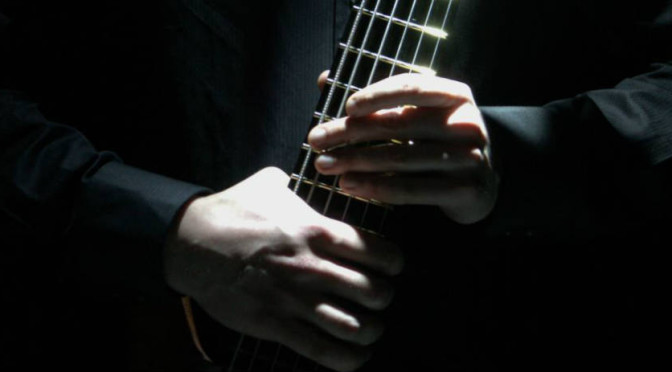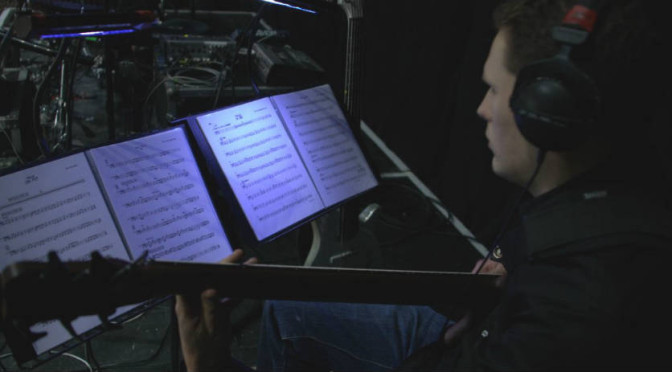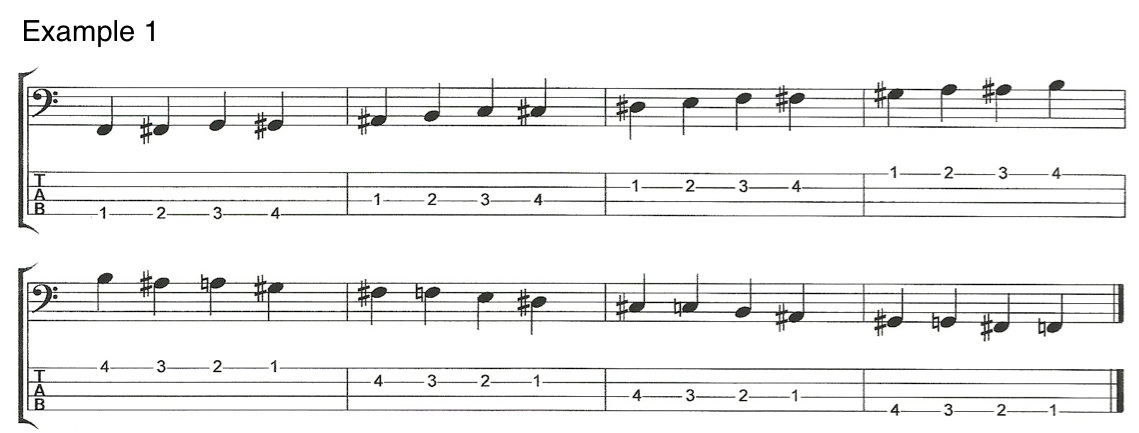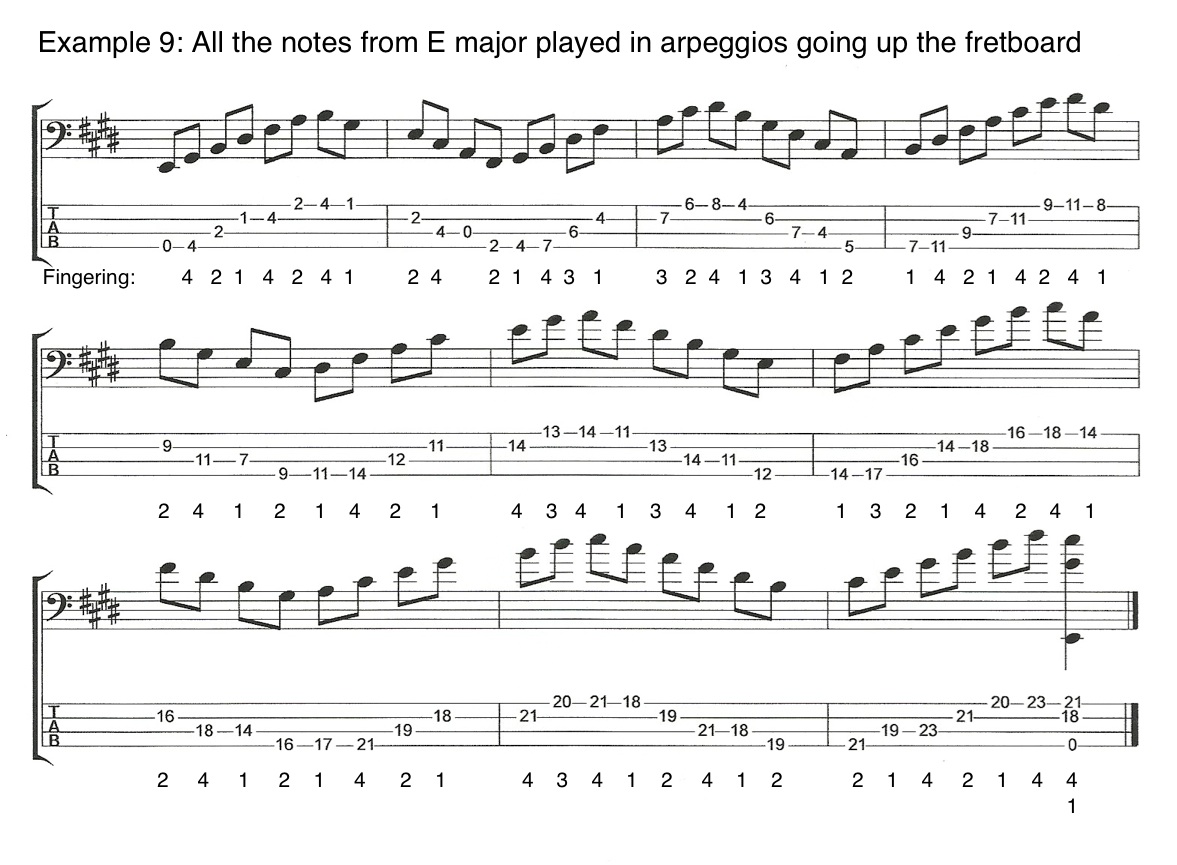Eighth Note and Sixteenth Note Bass Grooves
This is an important topic for bass players because most music has either an eighth note or sixteenth note feel. So, every bass player should know when and how to use eighth and sixteenth notes.
What are they and how do I master them on bass?
In this video lesson I’ll demonstrate the difference between bass lines with an eighth and a sixteenth note feel. Then, I’ll explain how to improve your rhythmic accuracy when playing these feels so that you will improve your groove.
First have a look at these two examples from my book Electric Bass – Improve Your Groove: The Essential Guide to Mastering Time and Feel on Bass Guitar. Find the book by following this link.
Eighth Note Example

Sixteenth Note Example

Listen to both examples either by watching the video or by using the Mp3 audio tracks that accompany the book. It’s so important to listen to the examples as well as reading them. If you only read them without listening then you’re only getting half the story.
The first thing that I want you to notice about these examples is that they’re quite similar. The speed and chord progression are the same and they contain mostly the same notes. I deliberately wrote them that way because I wanted the only difference to be the rhythmic feel. The first example has an eighth note feel and the second has a sixteenth note feel.
What is an eighth note feel?
An eighth note feel means that every beat is divided into two. So each beat contains a beat and an off-beat.
The off-beat is the point in time exactly equally distant from the beat before and the beat after. The eighth note example above has four beats in each bar so there are four beats and four off-beats in each bar. Therefore there are eight different places in each bar where you can place a note either on the beat or off the beat. Hence it is called an eighth note feel.
It can only be called an eighth note feel if all the notes are placed on either beats or off-beats. If a note is placed on any other sub-division then it’s no longer an eighth note feel.
An eighth note feel does not mean that you have to play eight notes in every bar on all of the eight sub-divisions. It means that all of the notes that you play are placed on either beats or off-beats.
How do I improve my eighth note groove?
In most cases when you’re playing an eighth note feel, you’ll play with an eighth note drum beat. Meaning that the drums are playing the eighth note sub-division. If you want your bass line to groove you need to make sure your notes sit very accurately in time with the drummers sub-divisions.
However, you should also be able to groove playing eighth notes even when you’re not playing with a drum beat. In order to improve your eighth note grooves you need to have a system for feeling the eighth note sub-division when you play.
My system involves using the syllables Ta-Ka. Using this system Ta represents the beat and Ka represents the off-beat. Recite Ta-Ka four times making sure that every syllable has equal length, Ta-Ka / Ta-Ka / Ta-Ka / Ta-Ka. This represents one bar of eighth notes. Four Ta‘s represent the four beats and four Ka‘s represent the four off-beats. Try reciting the Ta-Ka‘s in time with the audio example in the video (you’ll find it at 1m52s). If you can do that and keep it in time, then you are feeling the eighth note sub-division.
How should I practise to improve my eighth note feel?
You will improve your eighth note bass grooves by playing off-beats very accurately. I hear a lot of bass players who play on the beat very well, but they seem to guess where the off-beat is. They play it either too early or too late.
The key to having great timing is the ability to place a single note very accurately onto a sub-division. Practise this by first placing a note just on the beats (Ta‘s) and then just on the off-beats (Ka‘s). I’ve demonstrated this in the video. If you’re struggling to keep in time while you do this, make sure you practise it slowly in time with either a metronome or drum beat.
In order to play eighth note grooves really well, you first need to feel the beats and the off-beats and you need to be aware of which notes land on the beats and which land on the off-beats. Then you need to make sure that the notes on the beats land perfectly on the Ta syllables and the notes on the off-beats land perfectly on the Ka syllables. If you do that, your bass groove will be superb when playing eighth notes either with or without a drum beat.
What About Sixteenth Note Grooves?
Please continue to Part 2 of this lesson, you can find it using the link below. In Part 2 you will learn everything you need to know about sixteenth note bass grooves.
8th and 16th Note Bass Lines – Part 2 – Sixteenth Notes












